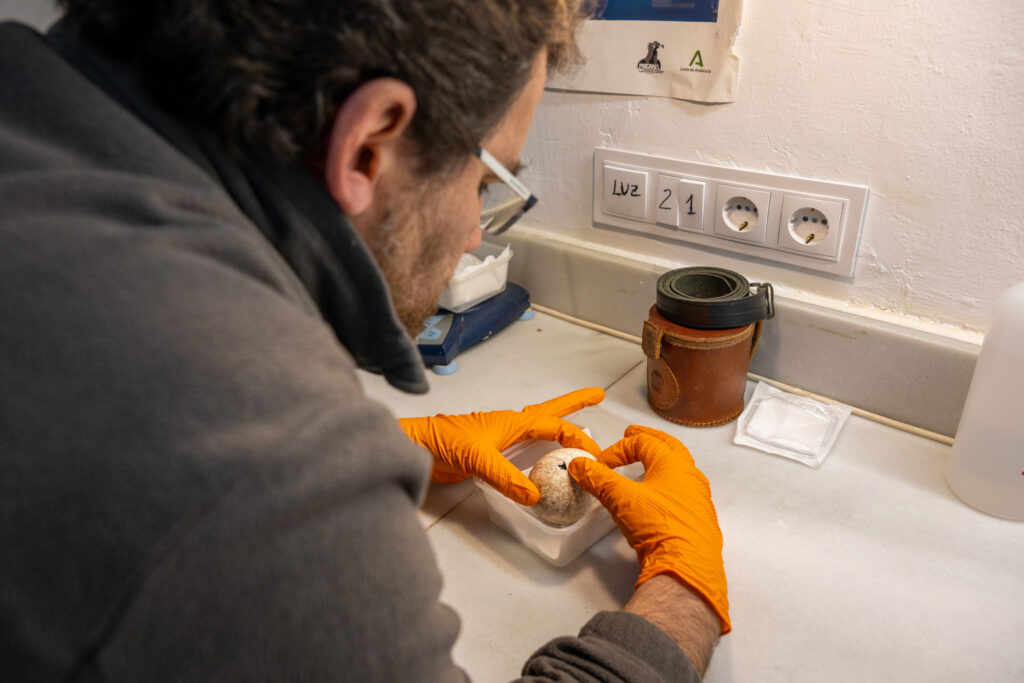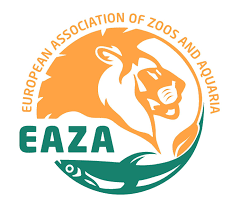On 13 June, two juvenile Bearded Vultures (Gypaetus barbatus) were released in Andalusia, Spain, marking the last release of this season. In total, 21 Bearded Vultures hatched and reared in captivity by member organisations of the Bearded Vulture Captive-Breeding Network (Bearded Vulture EEP) were released this year, in nine European Regions.

Meet “Serafín” and “Ángeles”, the Bearded Vultures released in Andalusia
Around 25 participants welcomed the juvenile Bearded Vultures Serafín and Ángeles at Sierras de Cazorla, Segura e Villas Nature Park. Serafín (BG 1188) hatched at the Chomutov Zoo in the Czech Republic on 17 March, whilst Ángeles (BG 1182) hatched at the Korkeasaari Zoo in Helsinki, being the first descendant of a productive pair to be released in Andalusia. The Bearded Vultures arrived in the Guadalentín Specialised Breeding Center a couple of days ago, which is managed by us at the VCF under an agreement with Junta de Andalucia. On 13 June, the juvenile birds were transported to Cazorla and released following the ‘hacking method’, which entails placing young birds in an artificial nest in suitable habitat to acclimatise to the natural environment before they take their first flights, mimicking their natural way of fledging.
The Bearded Vulture reintroduction project in Andalusia began in 1996, with the first captive-bred birds released in 2006. Nine years after the first releases, Toño and Blimunda formed the first pair, marking a significant milestone for the comeback of Bearded Vultures, which have been extinct in the area for 32 years. Since then, new juveniles have been released yearly at the Sierras de Cazorla, Segura e Villas Nature Park, to strengthen the Andalusian population.





Bearded Vultures to Andalusia
There are currently ten established breeding pairs in Andalusia, and another four are in the process of formation. Additional promising information is that almost ten birds are settled in the Sierra Nevada, and in the south of Albacete province (in the north end of the Cazorla, outside of Andalusia), two news pairs are setting down. These pairs are formed by adult females and 4-5 years old males.
Eight pairs laid eggs this season, from which five hatched, but only two survived. The chicks that survived were tagged to monitor their dispersion and health condition. The first breeding attempts of new pairs are typically unsuccessful. Hence, it is fundamental to keep releasing captive-bred Bearded Vultures and increase the number of potential breeding pairs established in the area.

A successful captive-breeding season thanks to the collective effort of many partner organisations
As the Bearded Vulture EEP coordinators on behalf of EAZA, we at the Vulture Conservation Foundation (VCF), we are responsible for collecting information on the status of all the animals of the species, producing a studbook, carrying out demographic and genetic analyses, and producing a plan for the future management of the species. Further to this, every year, VCF Dr. Alex Llopis, together with the Species Committee, makes recommendations on which Bearded Vultures should breed, and which individual animals should be transferred, but he is also responsible to decide which birds should be released into the wild (and where) and which should be held in captivity to ensure genetic diversity within the network. This year, 14 chicks were kept in captivity and 21 were released.


We are deeply thankful to the several partnering organisations and to all the dedicated technicians who work hard every day to ensure the survival and well-being of our captive Bearded Vultures. In addition, the release projects are only successful thanks to the many conservation organisations and researchers working in the field, tagging, maintaining feeding areas, and following from close the juveniles in their new homes. It was our collective and coordinated effort that made this season so successful! Thank you to all that contribute to ensuring a flourishing Bearded Vulture population in Europe.









